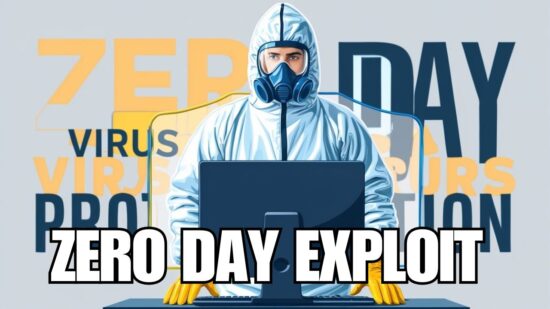5 Ways Hackers Break Into Your Business IT Network: Protecting Your Company’s Digital Assets
Cybersecurity threats are a constant concern for businesses of all sizes. As technology evolves, so do the methods employed by hackers to breach corporate networks and gain unauthorized access to sensitive data. Understanding these tactics is crucial for protecting your company’s digital assets and maintaining the trust of your clients and partners.
By familiarizing yourself with the most common ways hackers infiltrate business networks, you can take proactive steps to strengthen your organization’s cybersecurity defenses. This knowledge empowers you to identify potential vulnerabilities and implement effective countermeasures, reducing the risk of costly data breaches and reputational damage. Let’s explore five primary methods hackers use to break into your network and compromise your business’s IT infrastructure.
1. Phishing Emails
Phishing emails remain among the most common ways hackers infiltrate your business IT network. These deceptive messages often appear legitimate, tricking you and your employees into revealing sensitive information.
Email phishing is the gateway for many hacking attempts. It combines the vulnerability of your staff with easy network access, requiring minimal effort from the attacker.
Hackers craft these emails to look like they’re from trusted sources, such as banks, suppliers, or internal departments. They may ask you to click a link, download an attachment, or provide login credentials.
Once you interact with a phishing email, hackers can access your network, install malware, or steal sensitive data. The consequences can be severe, ranging from financial loss to reputational damage.
To protect your business, train your employees to recognize phishing attempts. Teach them to verify sender identities, scrutinize email content for red flags, and avoid clicking suspicious links or downloading unexpected attachments.
Implement robust email filters and security software to catch potential phishing attempts before they reach your inbox. Regularly update these systems to stay ahead of evolving threats.
Consider conducting simulated phishing exercises to test and improve your team’s awareness. This practical approach can significantly strengthen your first line of defense against email-based attacks.
2. Malware Injections
Malware injections pose a significant threat to your business IT network. Hackers use various techniques to introduce malicious software into your systems, compromising security and potentially causing severe damage.
One standard method is through email attachments or links. These seemingly innocent files or URLs may contain hidden malware that activates when opened, giving hackers access to your network.
Another approach involves exploiting vulnerabilities in outdated software or operating systems. Hackers can inject malware through these security gaps, emphasizing the importance of keeping your systems up-to-date.
Keyloggers are a particularly dangerous form of malware. Once installed, they record keystrokes, potentially capturing sensitive information like passwords and financial data.
Drive-by downloads are another risk. Simply visiting a compromised website can trigger the automatic download and installation of malware on your device without your knowledge.
To protect your network, implement robust antivirus software and keep it updated. Regularly scan your systems for potential threats and educate your employees about safe browsing and email practices.
Consider using network segmentation to limit the spread of malware if it breaches your defenses. This strategy can help contain the damage and protect critical assets within your IT infrastructure.
3. Man-in-the-Middle Attacks
Man-in-the-middle (MITM) attacks significantly threaten your business IT network. In this attack, hackers intercept communication between two parties, potentially gaining access to sensitive information.
Cybercriminals can insert themselves into conversations or data transfers without your knowledge. They may eavesdrop on emails, text messages, or video calls, stealing valuable data.
One common MITM tactic involves creating fake websites to lure unsuspecting users. These malicious sites can mimic legitimate ones, tricking you into entering sensitive information like login credentials or financial details.
You should implement strong security measures to protect your business from MITM attacks. It is crucial to use unique, complex passwords for all accounts. This makes it harder for attackers to gain unauthorized access to your network or accounts.
Ensuring encrypted connections is another vital step. Always use HTTPS when browsing websites, especially those handling sensitive information. This helps prevent hackers from intercepting and decoding your data.
Regular security audits and employee training can also help safeguard your network. By staying vigilant and implementing best practices, you can significantly reduce the risk of being harmed by MITM attacks.
4. Exploiting Outdated Software
Hackers often target businesses with outdated software, which presents an easy entry point into your network and can cause extensive damage if linked to your corporate network.
When you fail to update your software promptly, your systems are vulnerable to known security flaws. Cybercriminals actively search for these vulnerabilities, which they can easily exploit.
Outdated systems are easier targets for hackers because they lack the latest security patches. This applies to all types of software, including operating systems, applications, and firmware.
Your IoT devices are particularly at risk if they run on outdated software. Webcams, smart devices, and industrial sensors can weaken your network security.
You need to implement a robust software update policy to protect your business. Check for updates regularly and apply them as soon as they become available.
Remember about third-party software and plugins. If left unpatched, these can also contain vulnerabilities that hackers can exploit.
Remember, outdated software poses security risks and can lead to compatibility issues. These can disrupt your business operations and make your systems less efficient.
5. Weak Passwords
Weak passwords remain one of the easiest ways for hackers to gain unauthorized access to your business IT network. Many employees choose simple, easy-to-remember passwords that are also easy for cybercriminals to guess or crack.
Common weak password practices include using short passwords, incorporating personal information, and reusing passwords across multiple accounts. Hackers can use automated scripts to try countless password combinations until they find the correct one.
Implement strict password policies to strengthen your network security. Require employees to use long, complex passwords with a mix of uppercase and lowercase letters, numbers, and special characters.
Encourage using unique passwords for each account to prevent a single breach from compromising multiple systems. Consider implementing multi-factor authentication for an additional layer of security.
Regular password changes can also help protect your network. Set up automatic password expiration and educate your staff on creating strong, unique passwords for each account.
Addressing weak passwords can significantly reduce the risk of unauthorized access to your business IT network. Remember, a strong password policy is crucial to your overall cybersecurity strategy.
Common Network Vulnerabilities
Businesses face significant risks from weak passwords and outdated software. These vulnerabilities can give hackers easy entry points to compromise sensitive data and systems.
Weak Passwords
Weak passwords are a major security flaw in many networks. They’re often easy to guess or crack, giving attackers unauthorized access.
Common weak password practices include:
- Using simple, common words or phrases
- Reusing passwords across multiple accounts
- Not changing default passwords on devices
To strengthen your password security:
- Use long, complex passwords with a mix of characters
- Implement multi-factor authentication
- Use a password manager to generate and store unique passwords
- Enforce regular password changes for all users
Consider implementing a password policy that requires minimum length and complexity. Train your employees on creating strong passwords and the importance of not sharing them.
Outdated Software
Outdated software is a prime target for hackers. Unpatched systems often have known vulnerabilities that attackers can easily exploit.
Key risks of outdated software include:
- Unpatched security holes
- Lack of protection against new threats
- Compatibility issues with newer systems
To mitigate these risks:
- Set up automatic updates for all software and operating systems
- Regularly audit your systems for outdated programs
- Create a patch management process to test and apply updates
Be especially vigilant about updating critical infrastructure like firewalls, routers, and servers. Consider using a vulnerability scanner to identify outdated software and potential security gaps in your network.

Importance of Regular Security Audits
Regular security audits protect your business IT network from potential breaches. These assessments help you stay ahead of cyber threats and maintain a robust security posture.
Identifying Vulnerabilities
Security audits play a vital role in uncovering potential weaknesses in your IT infrastructure. By conducting thorough examinations, you can pinpoint areas that hackers might exploit.
Regular audits help you discover:
- Outdated software and systems
- Weak access controls
- Misconfigured network devices
- Unsecured data storage
These assessments provide a comprehensive view of your network’s security status. Based on the severity of identified vulnerabilities, you can prioritize fixes.
Audits also reveal gaps in your security policies and procedures, allowing you to update and strengthen your overall security strategy.
Implementing Security Patches
Once vulnerabilities are identified, implementing security patches becomes critical. Regular audits ensure you stay on top of necessary updates and fixes.
Timely patch implementation offers several benefits:
- Closing known security loopholes
- Protecting against newly discovered threats
- Improving system performance and stability
You should establish a structured patching process following each audit. Prioritize critical vulnerabilities and create a timeline for addressing less urgent issues.
Regular patching helps maintain compliance with industry regulations and standards. It demonstrates your commitment to data protection and cybersecurity best practices.
Remember to test patches in a controlled environment before full deployment. This minimizes the risk of unexpected issues affecting your network’s functionality.
Employee Training and Awareness
Educating your staff is crucial for protecting your business network. Proper training empowers employees to recognize threats and follow security best practices, significantly reducing the risk of successful cyberattacks.
Phishing Awareness
Phishing attacks are a common gateway for hackers to infiltrate your network. Train your employees to identify suspicious emails, links, and attachments.
Teach them to verify sender addresses and be wary of urgent requests for sensitive information. Encourage staff to report any suspicious emails to your IT department immediately.
Conduct regular phishing simulations to test and reinforce your team’s awareness. These exercises help employees practice spotting real-world phishing attempts.
Implement a clear protocol for handling sensitive information requests. Instruct staff to always verify such requests through a separate, trusted communication channel.
Safe Browsing Practices
Educate your employees on safe internet usage to minimize risks while working. Emphasize the importance of only visiting reputable websites and avoiding suspicious downloads.
Train staff to recognize signs of malicious websites, such as misspelled URLs or missing security certificates. Encourage the use of bookmarks for frequently visited work-related sites.
Teach employees to be cautious when using public Wi-Fi networks. If necessary, provide guidance on using a VPN for secure remote connections.
Implement web filtering tools to block access to known malicious websites. This adds an extra layer of protection against accidental visits to harmful sites.
Update your team regularly on new online threats and safe browsing techniques. Keeping your staff informed helps maintain a strong security culture in your organization.
Frequently Asked Questions
Hackers employ diverse tactics and tools to infiltrate business networks, exploiting vulnerabilities and causing extensive damage. Understanding these methods is crucial for effective cybersecurity.
What are the most common tactics hackers employ to infiltrate corporate IT networks?
Phishing emails are a primary tactic hackers use to gain access to corporate networks. They send deceptive messages that appear legitimate, tricking employees into revealing sensitive information or clicking malicious links.
Malware injections are another prevalent method. Hackers use various types of malicious software to compromise systems and gain unauthorized access to networks.
What specific tools and techniques are hackers known to use when attempting to compromise a network?
Hackers often use sophisticated tools to penetrate networks. These may include password cracking software, keyloggers, and network scanning tools to identify vulnerabilities.
Man-in-the-middle attacks are common when hackers intercept communication between two parties, potentially capturing sensitive data or injecting malicious content.
What vulnerabilities do hackers typically exploit to gain unauthorized entry into business premises?
Outdated software is a significant vulnerability that hackers exploit. Unpatched systems often contain known security flaws that cybercriminals can easily exploit.
Weak passwords are another major vulnerability. Hackers use brute force attacks or password guessing techniques to gain unauthorized access to accounts with simple or commonly used passwords.
Once inside a network, what types of damage can hackers inflict on a business’s systems?
Once inside, hackers can steal sensitive data, including customer information, financial records, and intellectual property. This can lead to significant financial losses and reputational damage.
They may also install ransomware, encrypting critical files and demanding payment for their release. In some cases, hackers might sabotage systems or plant malware for future attacks.
How do cybercriminals gain access to a company’s network without permission?
Cybercriminals often exploit human error to gain unauthorized access. This can include tricking employees into revealing login credentials or exploiting poor security practices.
They may also use unsecured Wi-Fi networks or use social engineering tactics to manipulate employees into granting them access.
What techniques do attackers use to access a system or network without authorization?
Attackers frequently use credential stuffing, attempting to use stolen username and password combinations across multiple systems.
Zero-day exploits are another technique in which hackers take advantage of newly discovered vulnerabilities before patches are available. This can provide quick and undetected access to targeted systems.






